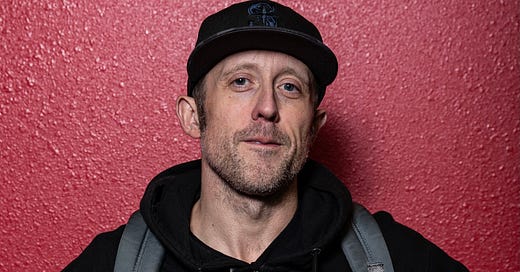Podcast Episode 6: Talking Shop with SI's Greg Bishop
Greg Bishop's career, much like mine, started on the high school beat and, as his career has gone from the New York Times to Sports Illustrated, and beyond, he still treasures those early experiences.
The first story I remember hearing about Greg Bishop involved Shaquille O’Neal’s stepfather.
At the time, Bishop was an intern at the Newark Star-Ledger, a Marine they called “Sarge.” As you can imagine, Sarge was not exactly the kind of person you wanted to get on the bad side of.
This, though, is the not-so-glamorous side of sports journalism, where quality reporting sometimes requires exposing things people would prefer to keep hidden.
If you want the full story, you’ll need to check out the full version of this week’s podcast (you can also listen on Spotify).
The short version is that Bishop’s reporting earned him a trip to the NBA Finals, where he came face-to-face (or perhaps “hands-to-throat” is a better description) with Sarge.
“Jim Gray broke it up. They wrote about it in the New York Post,” Bishop said. “They said a New Jersey intern was chewed out courtside. And 20 years later, I did Jim's book, Talking to GOATs, and now we’re business partners.”
This all ties back to the premise of this platform because Bishop’s career trajectory – from intern at the Star-Ledger to high school reporter at the Seattle Times – is a testament to his storytelling instincts. Back then, the Seattle Times had regional editions, with reporters dedicated to specific areas. Bishop covered Snohomish County, immersing himself in the community much like he approached that first long-form piece about Shaq.
“Well, I think with high school sports specifically, in a broader sense, they taught me how to cover something – how to research, how to organize, and how to call people,” he said.
Twenty years ago, reporters had to dig for stories using a phone with an actual cord that sat on a desk. When those calls were feel-good conversations, they were easy to make. But when controversy was involved, the thought of picking up that handset could cause anxiety that felt crippling (at least, that was the case for me).
Those calls, though, are the seeds from which great stories grow.
“I would hit every coach in every sport in that conference to ask for ideas, and then I’d make a big list from that,” Bishop said. “Now, I’m sitting here 23 years later – geez – and I do the same thing, but I can target the whole world. That mindset stays with you in a larger sense. And more specifically, it really helped me write about things that are hard to write about and ask questions that are hard to ask.”
Put two journalists together, and it’s inevitable they’ll start talking about the state of the industry. We lament the fact that coverage of high school sports has been cut back so drastically that very few of the great stories we once chased are being told (hence the creation of this Substack). But while newspapers continue to cut back, people are still finding ways to tell great stories.
“To me, a world without stories is not a world I want to exist in,” Bishop said.
That’s what keeps him going. That’s why you’re reading this today. And that’s why, I hope, you’ll enjoy this week’s podcast.
As always, if you have a story idea, please let me know.




